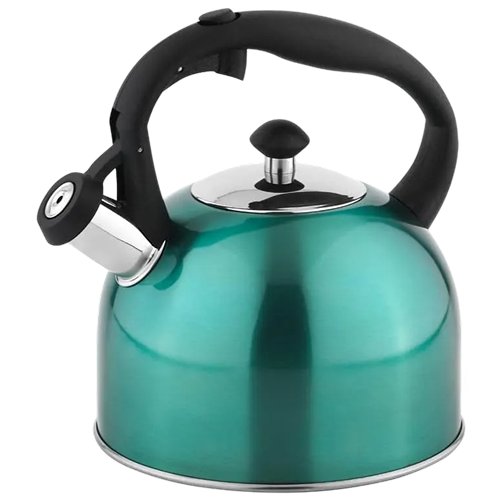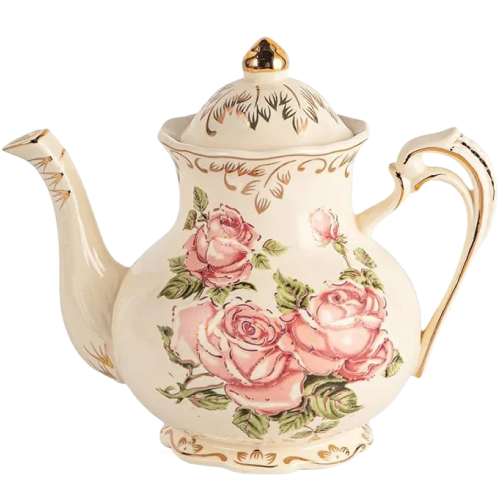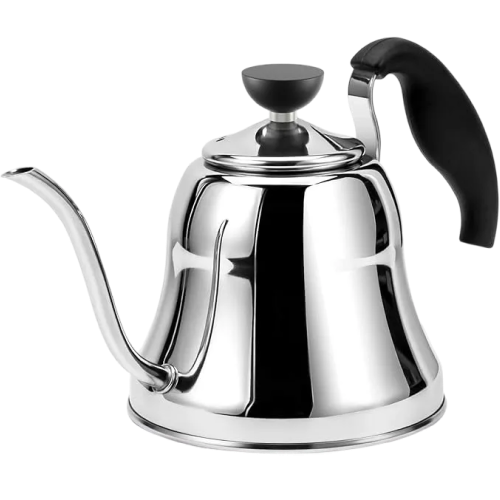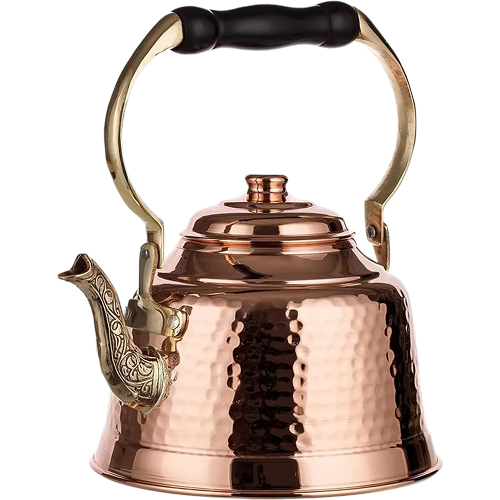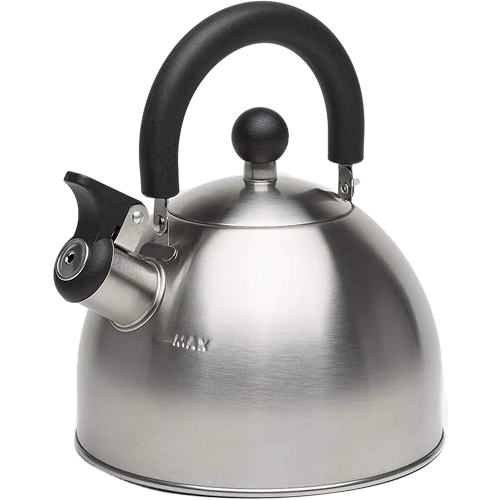Look, copper kettles are beautiful – that’s probably why you’re considering one. But there’s real engineering behind why they cost more than stainless steel models. Copper’s thermal conductivity is about 25 times higher, which sounds technical until you realize it means your water boils way faster and temperature changes happen in seconds, not minutes. Great for precision brewing. The catch is that the same property makes the whole kettle dangerously hot to touch and creates maintenance demands most buyers don’t anticipate.
My background in HVAC means I’ve worked with copper in thermal systems for years. The metal has specific properties that don’t forgive sloppy design or construction. A cheaply made copper kettle can actually be dangerous, not just disappointing.
Understanding Interior Lining Materials
Here’s the part nobody tells you in the product photos: bare copper should never come in contact with your drinking water. When copper heats up in contact with water, ions dissolve into the liquid. Drink that regularly and you risk digestive problems, possibly worse depending on concentration. Any copper kettle worth buying has a lining between the copper exterior and your water.
I’d only buy stainless steel linings. The 304-grade version (you’ll see it marked as 18/8 sometimes) is chemically inert and basically indestructible – set it and forget it. Tin lining has history on its side; it’s been used for centuries, and some tea enthusiasts swear it improves flavor. The problem is that tin degrades. You’ll need to have it re-tinned every few years, which isn’t cheap. Enamel coating falls somewhere in between: it holds up well until it chips, then you’ve got exposed copper touching water. If a kettle description doesn’t mention the lining material at all, walk away.
Copper Body Construction and Thickness
The gauge system trips people up because it’s counterintuitive – lower numbers mean thicker metal. For copper kettles, 16–18 gauge is the sweet spot, which is about 1.2–1.5mm of actual copper. Anything thinner dents easily and distributes heat unevenly.
You’ll see plenty of 22-gauge models sold as “authentic” or “classic.” They’re just using less copper to save money. I’ve handled enough of these to know they feel flimsy and show wear quickly. I recommend checking how the seams are joined. Welded or brazed connections hold up for decades, while rolled or crimped seams can fail after a few years of heat cycles.
Avoid “copper-plated” models altogether. They’re usually a stainless steel kettle with a thin outer layer of copper. It looks decent when it’s new, but once that plating starts wearing through (and trust me, it will), you’re left with a patchy-looking kettle that lacks copper’s thermal benefits. Real copper or nothing; look for 99% or higher purity.
Heating Element Type and Placement
The heating element deserves more attention than it gets. I’ll break down your options:
- Concealed stainless steel element. Hidden beneath a flat metal base, completely sealed from water contact. It resists mineral buildup, cleans easily, and lasts as long as the kettle itself.
- Concealed standard element. Also hidden, but without the stainless steel protection. Fine for most users, but slightly more prone to mineral accumulation over time.
- Exposed coil element. The worst option, especially for copper. The coil sits directly in the water, limescale cakes on it, and it’s nearly impossible to clean between spirals.
With copper kettles, concealed elements are essential. Copper conducts heat so efficiently that exposed elements create hot spots and stress points in the metal. A flat, concealed heating surface spreads the thermal load evenly, which is better for the copper body’s longevity.
Heat Management and Safety Features
Copper’s thermal conductivity is both its strength and its risk. The entire body gets hot within seconds of turning on the kettle. Not just warm, but hot enough to cause real burns. I learned that the hard way with my first copper teapot decades ago.
If you’ve got kids around or are clumsy like me, double-wall construction is a must. It places an insulating air layer between the hot inner copper and the cool outer shell. Even with water at a rolling boil inside, the exterior stays safe. Most kettles also include heat-resistant handles, but pay attention to the handle connection. If there’s no thermal break between the handle and the body, heat travels straight through.
Auto shut-off and boil-dry protection are non-negotiables. They prevent fire hazards and protect both the heating element and copper body from heat damage. Copper can warp or develop weak spots if it’s repeatedly overheated without water. The sensors in quality kettles cut power the moment water reaches boiling or if the kettle runs dry. I won’t buy any electric kettle without these features, period.
Temperature Control and Performance
Variable temperature control works beautifully with copper because the metal responds almost instantly to changes in heating intensity. Green tea needs 160–170°F, black tea needs 200–212°F, and coffee sits in between. Where stainless steel overshoots and stabilizes slowly, copper hits the target fast and stays there.
For a 1.5–1.7L copper kettle, I recommend at least 1500W. Higher wattage gets you faster heating, and copper amplifies that speed – you’ll get a rolling boil in under four minutes. The keep-warm function is genuinely effective because copper holds heat well once it’s up to temperature. You’re not constantly re-boiling and wasting energy.
Usability Features
Modern copper kettles may look traditional, but the best ones include features that make everyday use easier.
- Cordless design with 360° base. Lets you lift the kettle from any angle and place it back without alignment. I’m right-handed, but I still appreciate the flexibility, especially when the counter’s crowded.
- Lid opening mechanism. Push-button releases are the fastest and most convenient. Lever releases work, but needs two hands sometimes. Manual lift lids are slower and let more steam hit your hand.
- Spout design. Standard pour spouts work fine for most uses. Gooseneck spouts give you precision control for pour-over coffee, but they’re slower for regular tea making.
The 360° base matters more than you’d think. Older kettles have a notched connection that only works one way, and when you’re half-awake making morning coffee, wrestling with kettle alignment gets old fast.
Copper Finishes and Aesthetics
Copper kettles come in a range of finishes, each with its own look and maintenance level. Think about how much time you want to spend keeping yours looking new.
I’d pick brushed or pre-patina for daily use. Polished copper looks stunning out of the box, but quickly becomes a maintenance project. You’ll spend ten minutes every week or two buffing it back to shine. Some people enjoy that, but I’d rather spend that time doing literally anything else.
Practical Considerations and Maintenance
Copper takes more upkeep than stainless steel, but it’s not a dealbreaker. With the right care routine, your kettle can stay beautiful and functional for years.
Descaling and Interior Cleaning
Your water hardness determines how often you’ll need to descale. I descale monthly; you might go two months between cleanings. Mix equal parts water and white vinegar, boil it, let it sit for 15 minutes, and rinse thoroughly. Standard procedure. Stainless steel lining handles vinegar just fine. If you have tin lining, use citric acid instead, since vinegar can degrade tin over time.
External Copper Care
There are two camps: people who polish religiously to keep a bright finish, and those who embrace the natural brown patina. Neither approach is wrong. Patina is just copper oxide; it doesn’t damage anything or affect function.
If you prefer shine, copper-specific cleaners work well. The ketchup method looks odd but works, since the acid really does clean copper effectively.
Water Level Indicators and Sealing
Dual-side water level indicators are more useful than you’d expect. You can check the water level without turning the kettle around. The viewing window needs good sealing since copper expands and contracts with heat more than stainless steel. Over time, poor seals can fail. Look for silicone or rubber gaskets rated for heat cycles. Illuminated indicators are a nice touch for dim kitchens, but not essential.
Common Mistakes When Buying Copper Kettles
- Buying on looks alone. A gorgeous kettle with thin copper and no interior lining will cause you problems. Check specs before you fall in love with how it looks on the shelf.
- Ignoring the heating element. Most people obsess over the copper exterior and don’t think about the component that actually heats the water. An exposed element in a premium copper kettle makes no sense.
- Underestimating maintenance. If you’re buying polished copper, be honest about whether you’ll actually polish it regularly. Otherwise, go with a different finish from the start.
- Skipping safety certifications. Look for ETL, UL, or CE marks. These mean the kettle has passed safety testing. No certification often means no testing, especially with imported kettles.
Which Copper Kettle is Right For You?
Know your budget before you start shopping. Most decent copper kettles fall in the $80–$250 range. Under $60, you’re looking at thin copper, suspect linings, or copper plating over stainless steel. Above $300, you’re mostly paying for branding and design rather than real performance gains.
Be honest about maintenance, too. If you prefer low-fuss upkeep, stick to brushed or pre-patina finish with stainless steel lining. If you’re drawn to traditional materials and don’t mind paying for re-tinning every few years, a tin-lined kettle with polished copper might work for you. It’s better to choose based on realistic habits rather than ideal intentions.
Safety and construction come first, and looks come second. A well-built kettle that performs reliably for years is far more valuable than one that prioritizes appearance over durability. I’d take a homely kettle that functions perfectly for 15 years over a beautiful one that causes burns or fails early.


